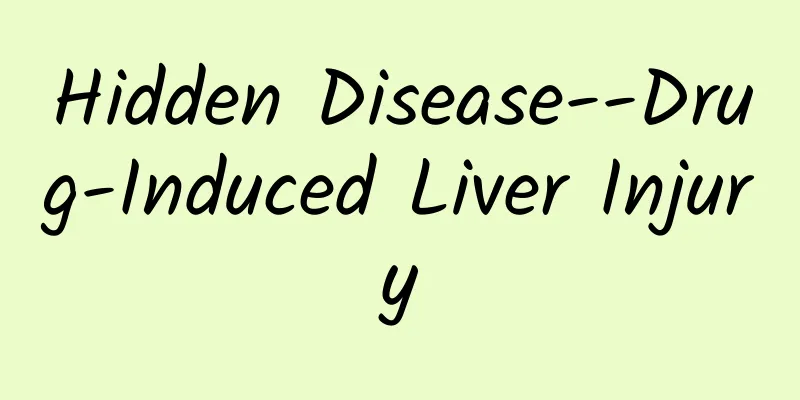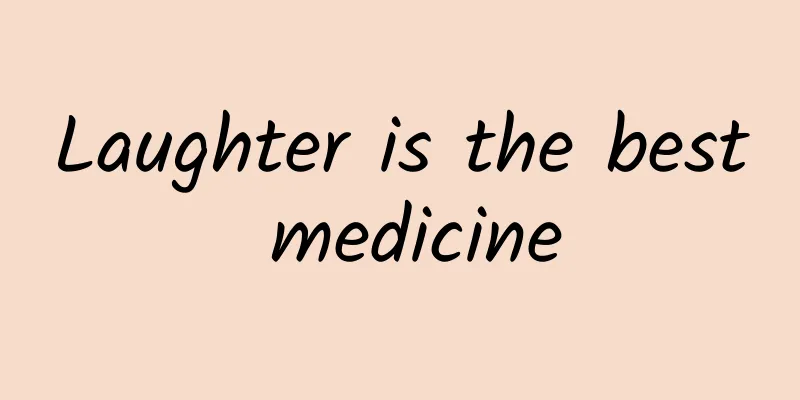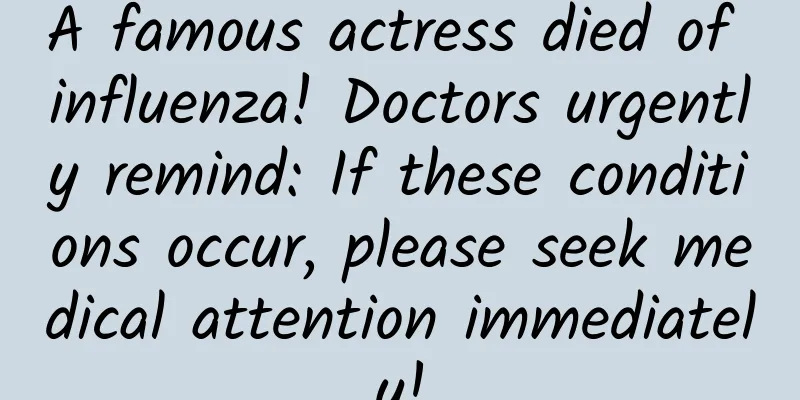Hidden Disease--Drug-Induced Liver Injury

|
"Doctor, my child has been feeling weak and listless lately. He eats less, has no appetite, and feels nauseous from time to time. Can you tell me what's wrong with him?" After the doctor examined the child, he asked, "Have you taken anything or taken any medicine recently?" "My child had a fever some time ago, and I gave him cold medicine and antipyretics, but now he has no fever. Is it because the cold has not completely healed that these symptoms appear?" "Okay, let's do a biochemical test first to see if there are any problems." Biochemical results showed abnormal liver function and significantly elevated liver enzymes, and the final diagnosis was drug-induced liver injury. So if a child is in a bad mental state, it is very likely that there is something wrong with the liver. So what is drug-induced liver injury? Today we will talk about drug-induced liver injury. 1. What is drug-induced liver injury? The liver is one of the important organs for drug metabolism or biotransformation, and the drugs themselves or their metabolites may cause damage to the liver. Liver damage caused by drugs or metabolites is called drug-induced liver injury. Because some drugs are highly hepatotoxic, and children's livers are not fully developed, their tolerance to drug hepatotoxicity is low, and most parents lack awareness of the risks of drug hepatotoxicity, which leads to the occurrence of drug-induced liver injury in children. On the other hand, most children have an insidious onset of the disease, lack of specificity in clinical manifestations, and even asymptomatic elevation of liver enzymes, which can easily lead to missed diagnosis. If liver-damaging drugs are not discontinued in time and intervention measures are not taken, it may develop into acute liver failure or even death. Therefore, early diagnosis and active and effective treatment are extremely important. 2.What are the symptoms of drug-induced liver injury? Most children with drug-induced liver injury have no obvious symptoms, and only show abnormal liver function and other indicators during laboratory tests. Some children have clinical manifestations, but they are not specific, mainly manifested as fatigue, loss of appetite, nausea and vomiting, yellow eyes or skin, rash, itchy skin, fever, abdominal pain, hepatosplenomegaly, etc. The final diagnosis still depends on laboratory tests, so parents should pay special attention. If the child develops the above symptoms after taking certain highly hepatotoxic drugs, it is likely to be drug-induced liver injury. It is recommended to seek medical attention in time and actively treat it. 3. What drugs are likely to cause drug-induced liver injury? The three most common types of drugs that can cause drug-induced liver injury in children are antibiotics (azithromycin, erythromycin, cephalosporins, fluconazole, etc.), traditional Chinese medicine (including Chinese patent medicine and Chinese herbal medicine), and antipyretic analgesics (acetaminophen, nimesulide, etc.). Other common drugs include anti-tumor drugs (methotrexate, cyclophosphamide, cytarabine, etc.), anti-tuberculosis drugs (rifampicin, isoniazid, etc.), anti-epileptic drugs (sodium valproate, carbamazepine, etc.), antiviral drugs (adenosine, acyclovir, etc.) and glucocorticoids, etc. [1]. In fact, there are many drugs that are prone to drug-induced liver injury. Parents must read the instructions carefully when giving children medications and use them according to the usage and dosage in the instructions. Do not increase or decrease the dosage on your own. You should also read the precautions and drug interactions in the instructions carefully to avoid medication errors. It is worth noting that drug-induced liver injury caused by traditional Chinese medicine is increasing day by day, such as Chinese medicines such as Polygonum multiflorum and Tripterygium wilfordii[2]. Traditional Chinese medicines are mostly compound preparations with complex ingredients. There is still a lack of unified standards, especially for the dosage of children. Parents should get rid of the misunderstanding that traditional Chinese medicine is natural, safe and non-toxic, and do not abuse traditional Chinese medicine for children, especially do not use Chinese patent medicines with unknown ingredients. 4. How to treat drug-induced liver injury? The most important treatment measure is to stop using suspected liver-injuring drugs in a timely manner. If suspected drug-induced liver injury is suspected, most patients can improve or even recover on their own. In severe cases, liver-protecting drugs can also be used for symptomatic treatment such as anti-inflammatory and enzyme-lowering. In terms of the selection of liver-protecting drugs, the guidelines recommend that severe patients can use N-acetylcysteine, which is the only antidote approved by the US FDA for the treatment of intrinsic drug-induced liver injury caused by acetaminophen. my country's drug regulatory authorities have approved magnesium isoglycyrrhizinate to increase the indication for the treatment of acute drug-induced liver injury, and it can be used to treat acute hepatocellular or mixed drug-induced liver injury with significantly elevated ALT. Other experience shows that for mild to moderate hepatocellular injury and mixed drug-induced liver injury, bicyclol and glycyrrhizic acid preparations can be tried for patients with severe inflammation; silymarin can be tried for patients with mild inflammation. Ursodeoxycholic acid can be used for cholestatic drug-induced liver injury [3]. In addition, the guidelines mention that there is currently no evidence that two or more anti-inflammatory and hepatoprotective drugs have a better effect on drug-induced liver injury, so the combined use of two or more anti-inflammatory and hepatoprotective drugs is not recommended [3]. Most hepatoprotective drugs are metabolized by the liver and will put a burden on the liver. If hepatoprotective drugs are overused, not only will they not have a therapeutic effect, but they will aggravate liver damage. Finally, it is recommended that parents do not blindly use hepatoprotective drugs. If there is a problem, seek medical attention in time and use hepatoprotective drugs under the guidance of a doctor or pharmacist. The onset of drug-induced liver injury in children is insidious, the clinical manifestations are non-specific, and some even have no clinical symptoms, and are only discovered during routine examinations. Therefore, medical staff and parents should pay enough attention to it and improve their understanding of drug-induced diseases such as drug-induced liver injury. The most critical and effective treatment method is to stop the suspected drug in time. Children who use highly hepatotoxic drugs, have a history of drug allergies, have chronic underlying diseases, and use multiple drugs in combination should pay special attention and seek medical treatment in time if abnormalities are found, so as to achieve early diagnosis and early treatment. For drugs that cause liver damage, effective liver-protecting drugs should be selected under the guidance of a doctor or pharmacist, and the use of other unnecessary drugs should be avoided as much as possible. Only in this way can children be kept away from drug-induced liver injury, pulled out of the shadows, and have nowhere to hide. Let us protect our children's livers together and give them a healthy and happy childhood! References: [1]. Zheng Xin, Lu Xiongcai, Qin Xiaolian, et al. Literature analysis of drug-induced liver injury in children in my country from 2007 to 2016 [J]. Chinese Pharmacy, 2017, 28(32): 4507-4510. [2]. Bai Zhaohui, Ma Shuli, Yan Xueli, et al. Investigation and analysis of liver damage caused by traditional Chinese medicine in children[J]. Chinese Journal of Basic Medicine in Traditional Chinese Medicine, 2020, 26(3): 366-368. [3]. Chinese Medical Association Hepatology Branch Drug-Induced Hepatopathy Group. Guidelines for the diagnosis and treatment of drug-induced liver injury[J]. Chinese Journal of Hepatology, 2015, 23(11): 810-820. |
Recommend
"Subject 3" is a hot topic on social media, and many people have sprained their ankles! These three types of people should pay attention →
When mentioning Subject Three, the first thing pe...
Is it okay to wear no makeup and only apply BB cream? When should BB cream be used?
If you want to look fair and shiny, but you are s...
Can pregnant women eat coix seed in the early stage?
I believe we all know that coix seed is a very go...
What are the common symptoms before menstruation?
For women, menstruation can be regarded as a loya...
Does urethritis affect women's sexual life?
Urethritis is a common gynecological disease in w...
How to treat uterine cold?
Some girls are prone to uterine cold. They experi...
Introduction to the treatment of uterine cold
Uterine cold is a very dangerous disease for wome...
Why do men with impotence often fart? Clinical research gives the authoritative answer!
Recently, the COVID-19 epidemic has reached a cli...
What should women eat to delay aging?
Many female friends pay special attention to thei...
Causes of abdominal pain caused by non-menstrual bleeding
Symptoms of non-menstrual bleeding and abdominal ...
Counterpoint: Huawei's share of the global high-end smartphone market will be 5% in 2023
Although global smartphone sales declined in 2023...
What to do if a woman is physically weak
The main symptom of a weak constitution in women ...
What to do if cupping leads to irregular menstruation
Losing weight is something that many women are pa...
Women who love beauty will make these five mistakes
Beauty is the most popular career for women. Afte...
How long after the fetus is expelled from the body
Fetal arrest mainly refers to embryonic arrest, w...








![[Medical Q&A] What kind of thyroid nodules have the risk of malignancy?](/upload/images/67f0e83d438c6.webp)
